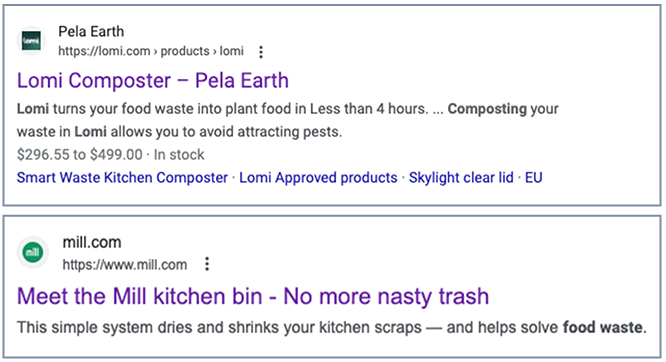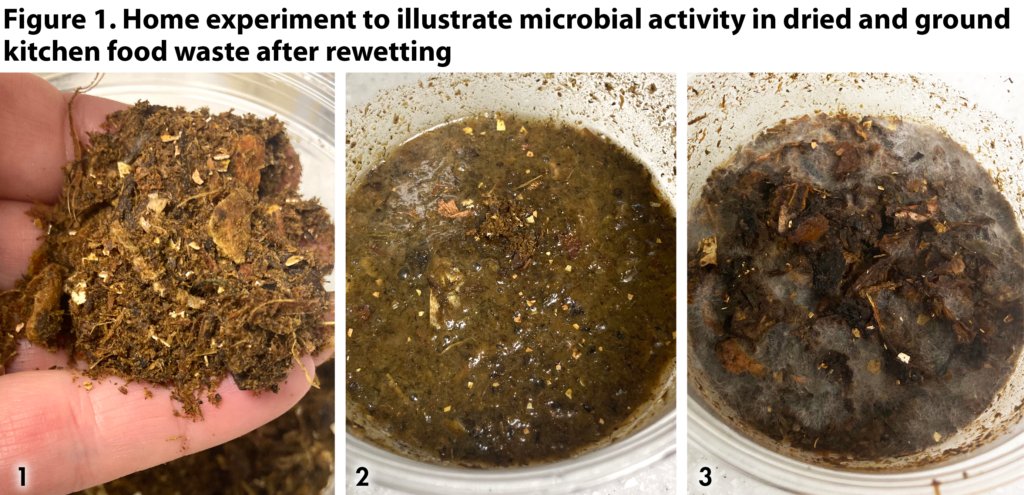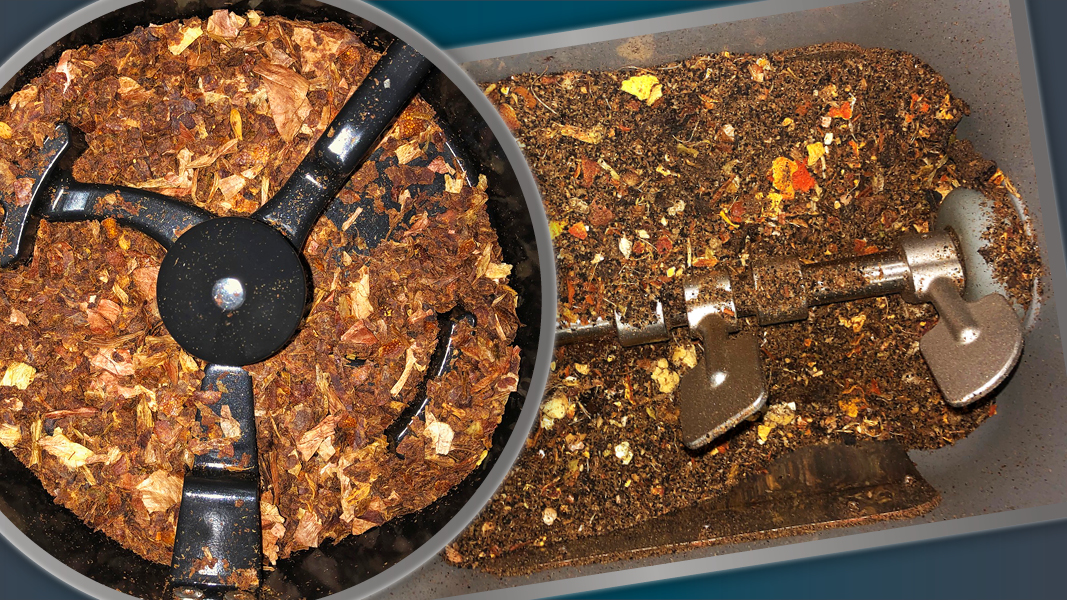Top: Lomi (left), Mill (right)
 Sally Brown
Sally Brown
Looks can be deceiving. I have a Mill, one of the new kitchen appliances that dries and grinds your food scraps overnight. I was contacted very early on in the Mill development process by one of the founders and have had contact with the company ever since, which is one of the reasons that I got an early delivery of a machine. As part of my involvement with Mill, I’ve also had the pleasure of testing a few other machines, including ones that also dry and grind. I wrote about some of these before in Connections. I truly hope that these represent the wave of the future. I hope that they become dishwasher equivalents — meaning something that every kitchen must have. My wish is that these devices end up coming in different shapes, colors and sizes, and that someday they respond to voice commands.

Lomi with detachable lid (top), Mill with foot pedal- controlled lid (bottom). Photos by Nora Goldstein
The one thing that these dry and grind machines don’t and can’t do is make compost. This is the big issue that I have with Lomi. The Lomi is a lovely machine that dries and grinds food waste. The photos of the stuff that comes out of the Lomi looks much like the stuff that comes out of my Mill bin. Mill asks that I send the output — what it calls Food Grounds™ — back to them so that they can turn it into chicken feed. Lomi says that the “dirt” that its “home composter” makes can go directly to soil in my garden or right in the pot for my indoor plants.
Lomi is right from the perspective of the 10,000 foot view plus several months’ time. Shorten the distance and the time and you end up with big odors, slime and dead plants. One of the miracles of soil is that it transforms death into life. Over time, soil can turn your rotten food into soil organic matter that in turn provides the nutrients for new plants to grow and bear fruit. The food that was rotten to you is more than palatable for the range of soil organisms who will take that slime and eat it for supper. In the process, it will be converted to microbial biomass and soil carbon. You can see this process over time in your garden and you can see it even more quickly in a compost pile.
What Compost Is
Real composting involves manipulating the environment in the pile to the right carbon to nitrogen ratio and appropriate moisture and oxygen to let massive numbers of microbes go to town. Compost can be made in two basic ways — actively or passively. In an active pile, conditions are set up to allow for thermophilic or high temperature decomposition. That takes weeks of frantic eating on the part of the microbes to get the leftovers to the point where they are stable enough to cool down. After the thermophilic phase, the piles are then left to cure. Here temperatures are cooler, but still above ambient. Eating is still going on but at a more leisurely pace. Only after weeks to months in a curing pile is that material really compost and ready for use in your garden. In a passive pile, the eating never gets quite frantic enough to heat a pile to thermophilic temperatures but goes on over many months. Make a pile, come back in a year to see if it is ready for prime time.

Google search results illustrate the contrast in nomenclature between products.
A Stable State … When Dry
These appliances take the highly putrescible (ready to rot) food waste and stabilize it by removing the moisture. Without the water, no microbe can decompose the stuff. The drying removes the water and also concentrates the salts. When you take this dried food waste and put water back into it (Figure 1), the microbes are able to step right up and resume the decomposition process. The yuck comes right back. Spread the dried and ground food waste at a very low rate over your lawn and nature will take care of it. Dig them into the soil, mix well and come back in a few months, and nature will take care of it. However, if you’ve taken Lomi at its word and put the dried and ground food on your house plant, it is near certain that you and your plant will not be happy. Too much putrescible stuff can overwhelm the soil’s ability to decompose and still carry out other functions — like letting plants grow.

1. Dried and ground food waste, 2. Rewetted material, 3. Mold resulting from microbial activity. Photos by Sally Brown
When Mill first started, I was all in favor of putting the output directly into the soil. We tried that in our yard. We live in a place where the rain stops sometime in June and doesn’t start again until mid-September at the earliest. A very light dusting of the dehydrator output in the fall on what we call grass essentially disappeared. The brown grounds faded into the brown grass. A higher rate mixed into the soil required a lot of water to wash the salts away. With that water we saw some mold on the soil surface. The spinach that we planted had reduced germination. By the following spring, all was grand. The dried and ground food was transformed into soil. Decomposition and stabilization will happen. But only with time. Another test of the stuff at higher rates and in an area where it does rain in the summer had a similar experience but more so. The soil crusted, the critters came and the plants died. Over time, as the soil was able to stabilize the added foodstuffs, it became soil organic matter and was an asset. But for weeks in the process, it was a liability.
You can add dried and ground food waste to your soil and have good results. But you have to do it with a lot of patience and distance. Turning it into the soil in the fall and coming back in the spring is a great way to do this. Calling it soil or compost right out of the machine is more than false advertising. It is the equivalent of telling people that a raw potato will taste as good as a crispy French fry. A few bites of that raw potato will turn you off to French fries.
I want every kitchen to have one of these machines. That may be the way that we really get food scraps out of landfills. I am fine with these same scraps feeding chickens (Mill), going to a composting facility, and even going into your soil. But to start out by calling the material compost is a disgrace to actual compost and a fast way to disillusioned customers.
Sally Brown, BioCycle Senior Adviser, is a Research Professor at the University of Washington in the College of the Environment.














